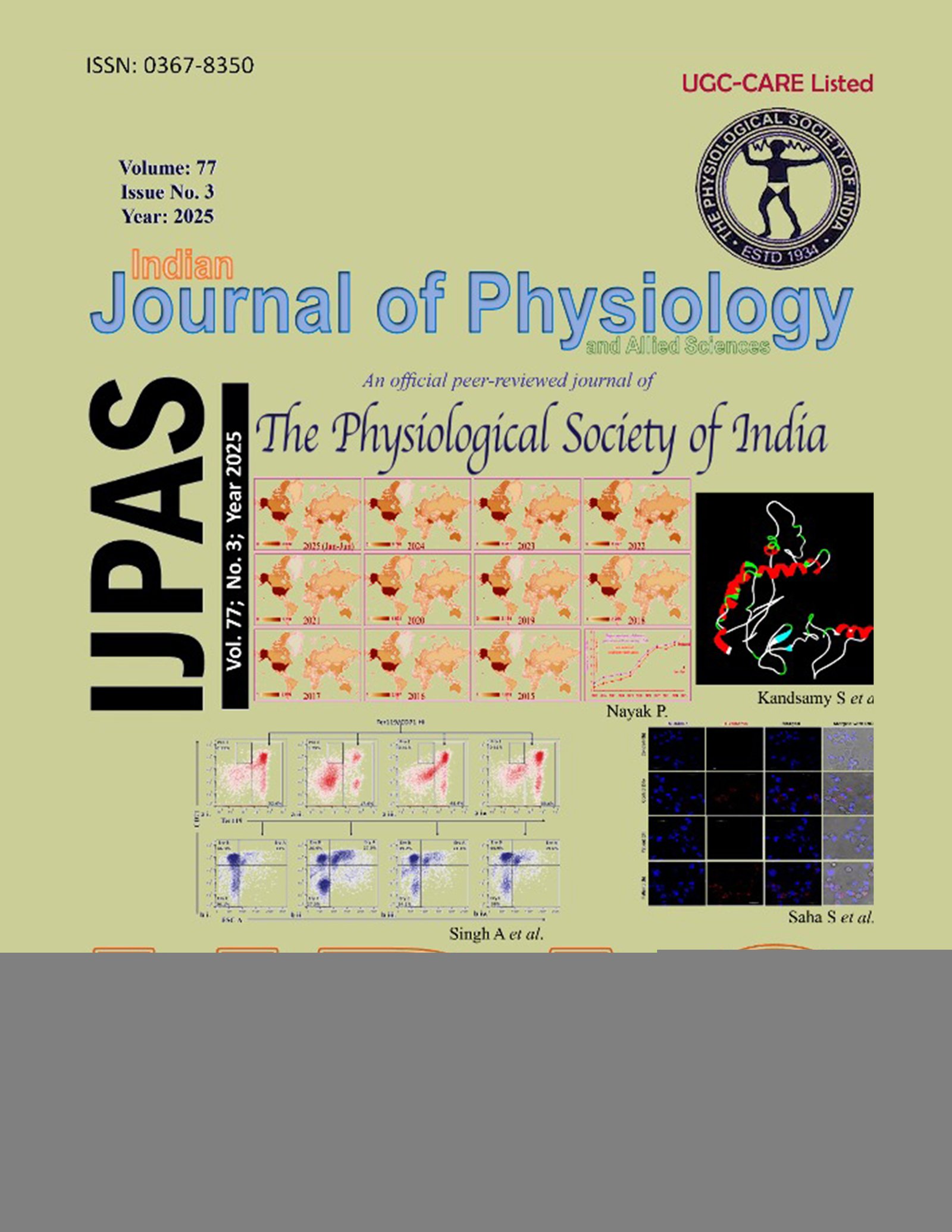Resting lung function capacity in elite Manipuri distance runners
DOI:
https://doi.org/10.55184/ijpas.v77i03.457Keywords:
Forced Vital Capacity, Tiffeneau-Pinelli Index, Peak Inspiratory Flow Rate, Spirometry, Peak Expiratory Flow RateAbstract
Background: Regular endurance training results in physiological adaptations that improve lung function. This study investigates the resting lung function capacity of elite Manipuri distance runners to evaluate their pulmonary efficiency. Methods: An observational study involved 12 elite Manipuri distance runners (six males and six females). Resting spirometry measurements included forced vital capacity (FVC), Forced Expiratory Volume in one second (FEV1), Tiffeneau-Pinelli Index (FEV1/FVC), peak inspiratory flow rate (PIFR), and peak expiratory flow rate (PEFR). Results: Male athletes exhibited significantly higher values of FVC, FEV1, PIFR, and PEFR than their female counterparts (p < 0.01). However, the FEV1/FVC ratio did not show a significant difference between the males and females. Comparisons with predicted values indicated no significant deviations, except for FEV1/FVC, which was noticeably higher than expected (p < 0.01). Conclusion: The spirometry values of elite Manipuri runners align with predicted norms, except for a higher-than-expected FEV1/FVC ratio, indicating superior airway efficiency.
Downloads
Published
How to Cite
Issue
Section
License
Copyright (c) 2025 Ramananda Ningthoujam

This work is licensed under a Creative Commons Attribution-NonCommercial-NoDerivatives 4.0 International License.

